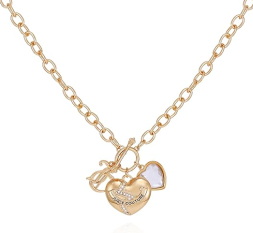Teenage Dogs Are Like Teen Humans — Expect Disobedience (And Handle It This Way)
How to navigate Fido's temperate.

When our Scottish collie, Buckaroo, reached adolescence at about 8 months old, he suddenly stopped obeying our commands. Previously, he had happily and willingly trotted by our side on our daily hikes, even off the leash. If he ran away, he only covered a short distance and returned on his own, clearly preferring our company to the scent of deer or other distractions. It was one reason we chose his breed. Scottish collies are “Velcro” dogs, the breeder said, and would always stick close to us. But as Buck entered his teenage phase — about 8 months to 1 year old in most dogs — he developed new behaviors and an openly defiant attitude. He was officially an angsty teenage dog.
At the end of our hikes, he now ran in the opposite direction, often uphill. When we called him, he would turn and gaze back at us as if asking, “Do I know you?” We called it “Buck’s alien face.” Of course, most parents experience something similar when their formerly congenial, obedient child suddenly turns into an eye-rolling, argumentative teenager. But Buck was a dog, and even though our trainer had advised us not to fret, we did. “He’s a teenager,” she explained. “He’ll grow out of it.”
We could help him through this stage by not making a big deal out of things or punishing him, she said, and by changing our response. Instead of standing in place and demanding that he come to us, for example, we should run in the opposite direction. And that did work — although running away from our puppy also made us sad. Did we have to trick him into wanting to be with us? When would he stop being an alien?
Teen Pups Are Testing the Limits
Most dog owners and trainers rely on “folk wisdom” (such as that offered by our trainer) about the developmental stages dogs pass through — how they change mentally and emotionally on the journey from puppy to juvenile to adult. Indeed, most researchers still refer to John P. Scott and John Fuller’s classic 1965 volume, Genetics and the Social Behavior of Dogs — which summarized the duo’s 13-year study of pups from five dog breeds from birth to adulthood. They recognized that dogs, like human children, hit a rough behavioral patch in adolescence, starting at 4 to 8 months old.
They called it the “Flight Instinct Period,” and described it as “a time when a puppy will ‘test its wings’ and wander farther away than before. It’s like a teenager going through puberty as the puppy is changing physiologically.” Worse, though, was the “Puberty/Young Adulthood Period,” which Scott and Fuller said lasted from 18 to 24 months: “This period can be marked by a surge in aggression by trying to achieve higher pack status. This is the stage in which they may exhibit negative behaviors that they previously overcame. This is the time where the negative behaviors of many dogs that have not been properly socialized appear.”
The Science Behind the Change
New research backs up both our trainer’s advice and Scott and Fuller’s study, although it states that a pup’s adolescence begins around 8 months of age and ends as they hit the one-year mark. Typically, puppies move from their litters into a human family when they’re about 3 months old, and bond with their humans much as children do, through physical and emotional contact. “But owners often feel like they’re failing when their puppies reach adolescence,” says Lucy Asher, PhD, a behavioral ethologist at Newcastle University and lead author of the new study, published in Biology Letters. Like human teenagers — whose bodies flood with hormones and whose brains are rewired during puberty — adolescent dogs experience many physiological changes. During this time, 95 percent of female dogs have their first fertile season, and the majority of male dogs become fertile, too.
In human teenagers, the surge of new and powerful hormones helps remodel the juvenile brain into an adult brain, but that hormonal flush also affects the nervous system, likely reducing the youngsters’ ability to control their emotions and impulses, while increasing their sensitivity and irritability.
Could hormones also make our young dogs hypersensitive, and cause them to disregard and disobey their owners? To find out more about the behavioral changes that likely accompany the physiological ones that juvenile dogs experience, Asher and her colleagues followed a group of guide dog puppies, including German shepherds, Labrador retrievers, and golden retrievers, plus mixes of these breeds, over the course of the first year of their life. They wanted to see whether the relationship between the canines and their humans would parallel the parent-child relationship in humans. (Speaking of parallels between dogs and humans, click through to see if your dog is ticklish, too.)
A Parent-Child Bond
The scientists asked caregivers and trainers of 285 puppies to complete questionnaires. They combined the data with results of behavioral tests administered to 69 of these same pups. Data was collected when the dogs were 5 months of age (preadolescent), 8 months of age (right in the middle of their “teenage” phase), and 12 months of age (the end of the adolescent phase for most dogs).
On the questionnaires, the dogs’ obedience was measured by choices such as “Needs obedience commands repeated to get a response” or “Refuses to obey commands, which in the past it was proven it has learned.” In behavioral testing, obedience was determined by the number of commands required to elicit the desired response — here it was “Sit!” because all of the dogs had mastered that command by 5 months of age.
The results were strikingly clear. There was a significant reduction in dog obedience in the middle of the adolescent period (8 months of age) in comparison to the dog’s behavior preadolescence (5 months) or at the end of adolescence (12 months). In behavioral tests during the puberty period, it was more than twice as likely that the dog would require multiple commands before it responded. Intriguingly, however, dogs only rebelled against their caretakers, while obeying relative strangers, such as their trainers.
The Human Comparison
Studies on parent-child relationships in humans have shown that adolescent rebellion is much worse if the caretaker and teenager don’t have a secure emotional attachment. Asher and her colleagues determined the strength of the emotional attachment between the dog and caregiver via questions such as “Becomes agitated (whines, jumps up, tries to intervene) when you show affection for another dog or animal.” They asked caregivers to score the puppies on their attachment and attention-seeking behaviors — such as sitting very close to their owner or displaying a particularly strong bond for one person — as well as on separation-related behaviors like shivering or trembling when left behind. Both types of behaviors indicate general anxiety and fearfulness. (Click through to see why your dog chatters her teeth.)
Dogs with high scores on either scale entered puberty earlier — at about 5 months, compared with 8 months for those with lower scores. Multiple factors cause human teenage girls with poor parental relationships to also enter puberty at a younger age. Thus, similar to humans, dogs that have fraught relationships with their caregivers see shifts in their reproductive development.
That’s a “striking” finding, says Barbara Smuts, PhD, a behavioral ecologist at the University of Michigan, Ann Arbor, who was not involved in the study, and who finds the results “very welcome and useful.” Further, adolescent dogs that were stressed by separation from their caregiver were also increasingly disobedient to that person, but not others — again, mirroring the insecurity of human teenagers.
A Passing Phase
Owners respond in many ways to their suddenly disobedient puppies, Asher says. Most feel surprise and hurt — like we did. Some punish their pups, some ignore them, and some even send them away. Indeed, teenage dogs are the most likely age group to land in US shelters — a sad and unnecessary result, because as Asher points out, “These behavioral changes were a passing phase. By the time the dogs were 12 months old, they’d returned to how they were before puberty, or in most cases, improved” — becoming the loving, obedient companion their owners longed for.
It’s up to a pup’s owners to help their young dog through this stressful phase, Asher and Smuts agree. An adolescent dog may not only become disobedient, but may react fearfully or shyly when it encounters someone or something new. Owners can help shape their dogs’ confidence and positive temperament by not overreacting to such changes, and by continuing to pursue a daily routine, including taking their teenage pups on walks, playing games, and introducing them to strangers. All such exercises will help dogs get through their adolescent phase and emerge as steady, confident adults. Indeed, we now laugh when we recall Buckaroo’s “alien phase” — and delight in his joyful response when we ask him to come, sit and stay with us for awhile.
How To Teach and Nurture Teen Dogs
- You don’t want your teen pooch to experience boredom, that’s for sure. Keep any training sessions short and fun.
- Teen dogs may run off on their own and resist coming back, so consider a long leash on your dog’s harness so you can allow independence but keep your pet safe.
- Encourage cooperation by having delicious snacks at the ready as a reward.
- You’ve worked hard to socialize your dog as a puppy. Now you must keep it up. Take your adolescent dog to the park. Let her run with other pups, if she wants. Keep her acclimated to humans aside from yourself. Most important, play with your dog, but do not play rough. This is the window for cementing that early bond.
- Your adolescent dog may experience the new onset of fear. Encourage and comfort him, and demonstrate by your own actions that all is fine.
- Teen dogs may be getting adult teeth and going through teething. They must chew — like us humans — for teeth to set, so provide safe toys for them to chomp on.
A version of this article appeared in our partner magazine, Inside Your Dog’s Mind, in 2021.













